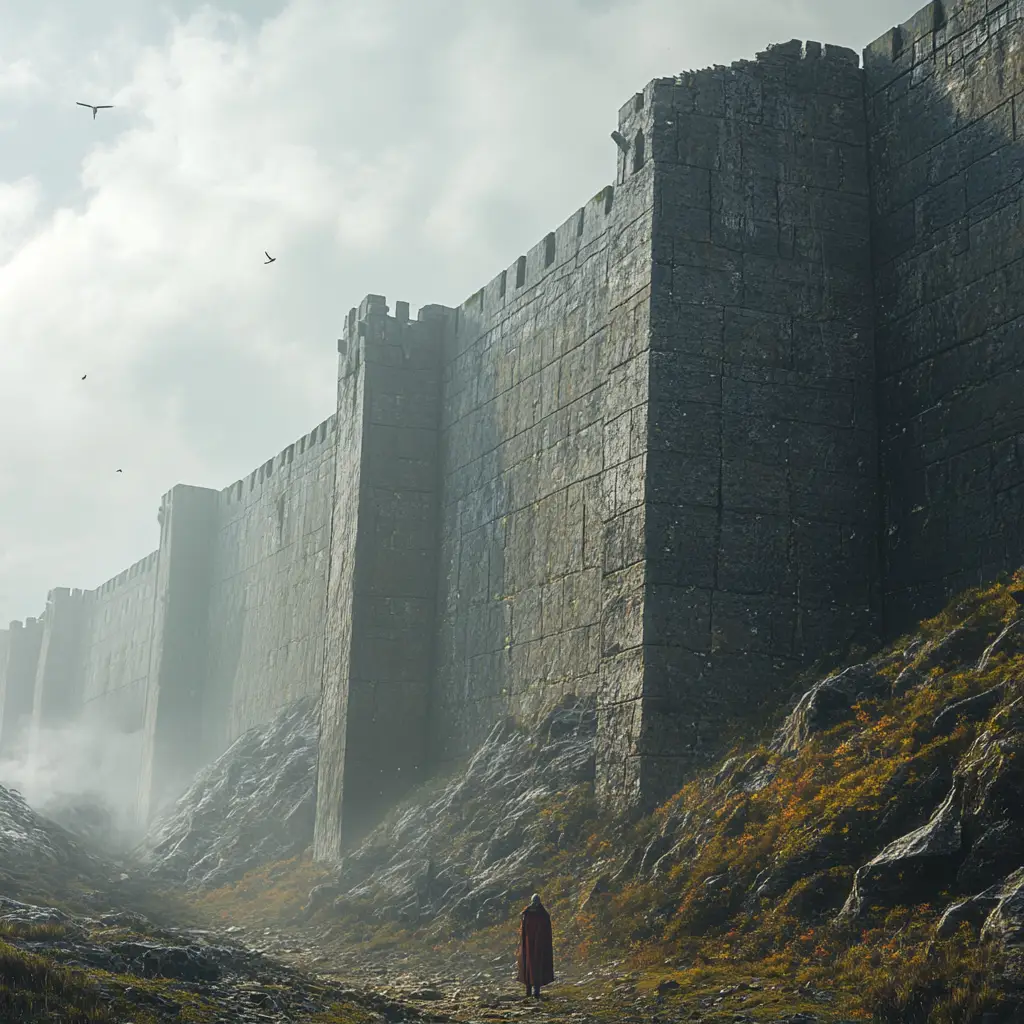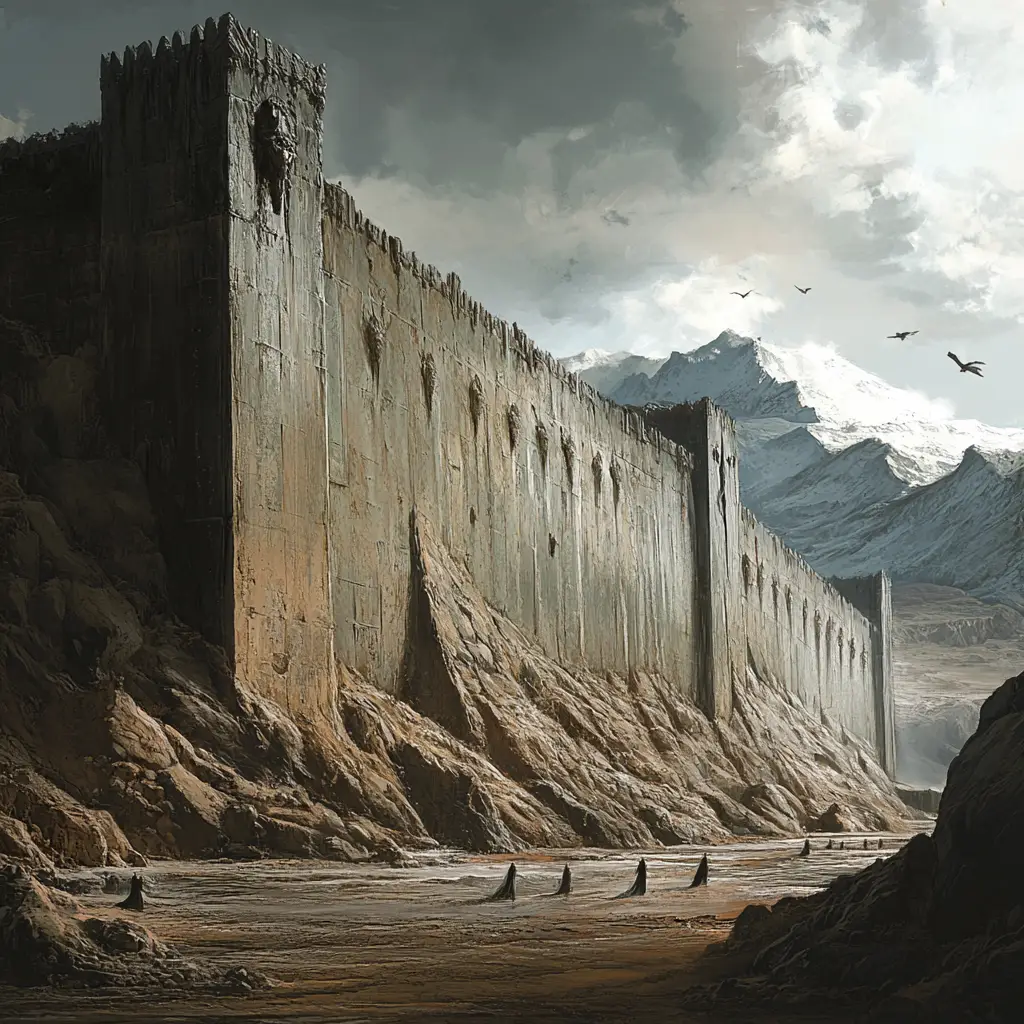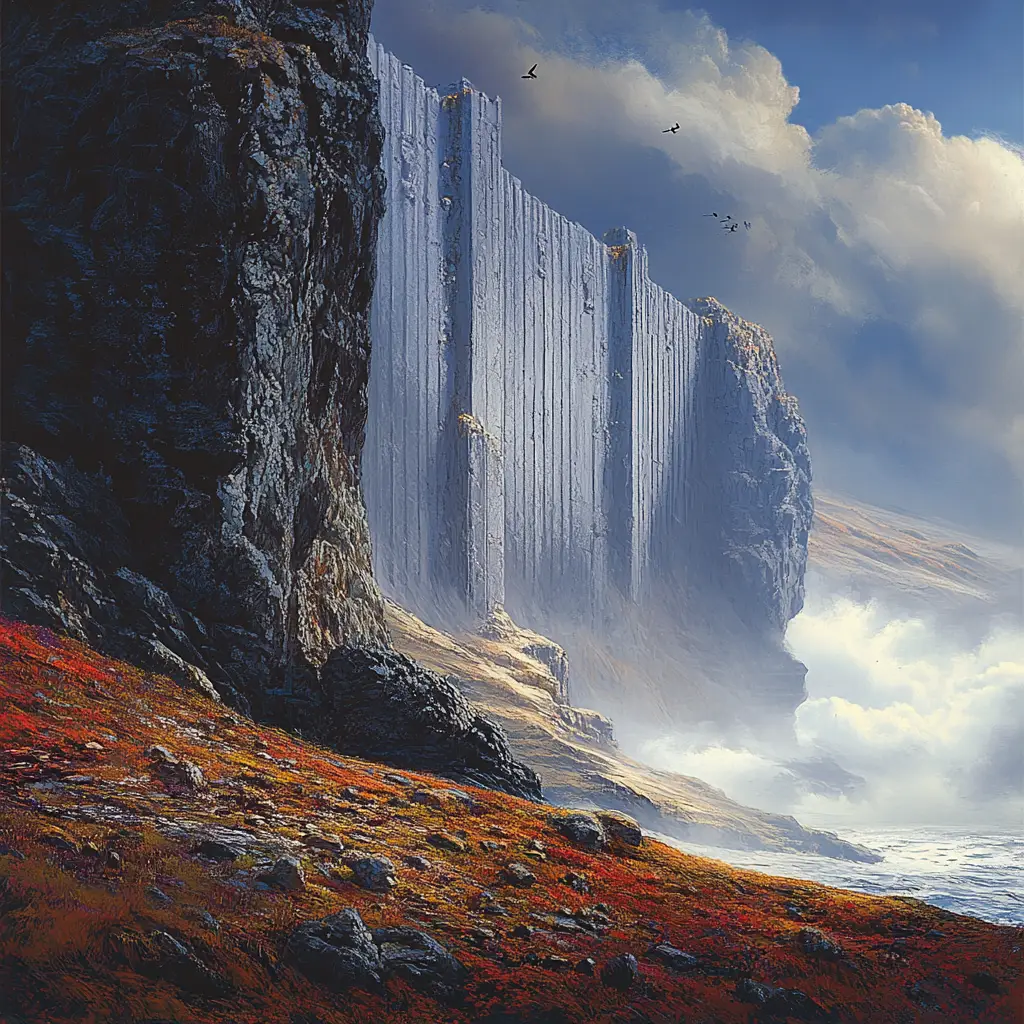In Norse mythology, Asgard’s Outer Wall (or “Asgard’s Wall”) is a critical, protective feature surrounding the realm of the gods. It appears primarily in the myth about the construction of the wall, which reflects themes of power, cunning, and the gods’ interactions with the giants.
The original outer wall was desttroyed by the Vanir gods with their war magic.
The Myth of Asgard’s Outer Wall
In the myth, the gods of Asgard sought to protect their realm from the giants (Jötnar) by building a strong outer wall. The gods were approached by a mysterious giant (often referred to as a “builder”) who offered to construct the wall in exchange for the hand of Freyja, the goddess of love and fertility, and also the sun and moon. The giant promised to complete the wall in one winter, a task that seemed impossible, and he stipulated that if he succeeded, he would be given Freyja, the sun, and the moon as his prize.
The gods were hesitant but agreed to the deal, setting one condition: the wall had to be finished in one winter, and if it was not completed on time, the giant would get nothing.
The Giant’s Progress
The builder began work on the wall, and he proved to be far more skilled than the gods had anticipated. He had a massive horse named Svaðilfari, which helped him move enormous stones. The giant worked tirelessly, and the wall began to take shape at an astonishing speed. As the deadline approached, it became clear that the wall would be completed on time, and the gods realized they might have to give up Freyja, the sun, and the moon.
Desperate to avoid fulfilling the bargain, the gods turned to Loki, the trickster god, known for his shape-shifting abilities and cunning. Loki agreed to help but only on the condition that he would not have to honor the deal if the giant finished the wall.
Loki’s Transformation
Loki, in his usual deceptive manner, came up with a plan. He transformed himself into a beautiful mare and went to the giant’s horse, Svaðilfari. The sight of Loki, in the form of a mare, caused Svaðilfari to become distracted and fall in love with him. Svaðilfari became obsessed with Loki, and as a result, he couldn’t continue working, which delayed the giant’s progress on the wall.
Loki and Svaðilfari spent a night together, and as a consequence of their union, Loki became pregnant (yes, Loki carrying a foal is one of the most bizarre aspects of this tale!). Loki later gave birth to an eight-legged horse named Sleipnir, who would become the finest and fastest of all horses in Norse mythology.
The Giant’s Defeat
When the giant saw that he was unable to complete the wall on time, he became furious. Loki’s trick had worked. The gods, however, still had to deal with the angry giant. In the end, Thor, the thunder god, took matters into his own hands and killed the giant, ensuring that the gods did not have to honor their original agreement.
The Birth of Sleipnir
The result of Loki’s unusual encounter with the horse was the birth of Sleipnir, a magnificent eight-legged horse who would later belong to Odin, the chief of the gods. Sleipnir was an incredibly fast and powerful steed, capable of traveling between the worlds of the Nine Realms, and was often seen riding alongside Odin on his various journeys.
Symbolism of the Wall
Protection: The wall represents a barrier between the gods and the chaos of the external world, particularly the realm of the Jötnar (giants), who are often enemies or rivals to the gods.
The Limits of Power: While the wall is strong, the gods’ reliance on deception and trickery (through Loki’s interference) to avoid fulfilling their promises highlights a theme of limits—no defense, even one as grand as Asgard’s wall, is impenetrable or invincible.
The End of the Wall: In some versions of the myth, the completion of the wall and its eventual destruction in Ragnarök (the end of the world) could symbolize the temporary nature of security and the inevitability of cosmic change.


